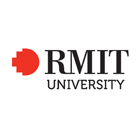Master of Cyber Security
- Home
- Courses
- RMIT University (Royal Melbourne Institute of Technology University)
- Master of Cyber Security
Master of Cyber Security
Shape what’s next for your career in IT Information technology is a dynamic industry, with growing demand for key technical skills becoming more prevalent across a variety of sectors. Seize your opportunities for career progression in IT with a qualification from RMIT. The Master of Cyber Security aims to equip…
Categories
COURSE DESCRIPTION
Shape what’s next for your career in IT
Information technology is a dynamic industry, with growing demand for key technical skills becoming more prevalent across a variety of sectors. Seize your opportunities for career progression in IT with a qualification from RMIT.
The Master of Cyber Security aims to equip you with the mathematical, technical and business tools to secure an organisation’s information systems.
Secure systems and networks are a vital responsibility for organisations of all sizes and in our increasingly connected world, it is more important than ever. From the latest internet worm to identity theft, danger is no more than a click away.
You will learn about local area network (LAN) security, cryptography, the Advanced Encryption Standard, RSA, smartcards, biometrics, ethical hacking and information systems risk management.
This degree includes opportunities for cyber security internships with industry organisations, both large and small.
Career
Some of the cyber security roles undertaken by RMIT graduates, in both government and private organisations, include:
penetration testers
IT risk analysts
security managers
forensic analysts
security auditors
network security engineers.
EDUCATIONAL INSTITUTION
Since its establishment in 1887, Royal Melbourne Institute of Technology University (RMIT) has been meeting the needs of the community surrounding it. Originally a Working Men’s College, RMIT showed its flexibility during World War Two, training over 20,000 servicemen in communications to help with the war effort.Now, it is a true pioneer in international education, championing cross-border study opportunities with campuses in various countries. Granted formal university status in 1992, RMIT is ranked 21st in the world for universities that are less than 50 years old.RMIT is the largest higher education institution in Australia, currently with more than 82,000 students. With nearly 20% of those students coming from overseas, it is a university that truly welcomes diversity and is a melting pot of different cultures. RMIT has three campuses in Vietnam, a European hub in Barcelona, an office in Indonesia, and partners with 200+ institutions in 42 countries to provide study opportunities worldwide.
Since its establishment in 1887, Royal Melbourne Institute of Technology University (RMIT) has been meeting the needs of the community surrounding it. Originally a Working Men’s College, RMIT showed its flexibility during World War Two, training over 20,000 servicemen in communications to help with the war effort.
Now, it is a true pioneer in international education, championing cross-border study opportunities with campuses in various countries. Granted formal university status in 1992, RMIT is ranked 21st in the world for universities that are less than 50 years old.
RMIT is the largest higher education institution in Australia, currently with more than 82,000 students. With nearly 20% of those students coming from overseas, it is a university that truly welcomes diversity and is a melting pot of different cultures. RMIT has three campuses in Vietnam, a European hub in Barcelona, an office in Indonesia, and partners with 200+ institutions in 42 countries to provide study opportunities worldwide.




